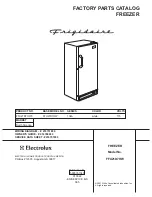
COMMISSIONING
HCV & HCVR Evaporative Cooling & Gas Heating
Page 16 of 26
H
EATING
S
ECTION
1.
Ensure gas pipe is free of condensates and deposits before connecting to heater.
2.
Purge all air from the pipeline and check for leaks by using a soap solution or leak detector.
3.
Ensure that motor and fan will turn freely by hand and are not fouled by foreign objects.
4.
Check gas pressure before gas valve (Must be less than 3.5 kPa)
5.
If a time clock is incorporated in the system set hours and day requirements to customer specification.
6.
Set thermostat to temperature as requirements to customer specifications.
7.
Turn on main line gas stock cock and leak test gas connections to unit.
8.
Check pilot burner electrode gas is 3mm from the pilot’s gas hood and that the flame rod has not
become bent and short circuited to a burner or the unit frame.
9.
Turn on gas cock in unit. Turn off test firing switch (if fitted), or set cock to pilot position.
10.
Set remote switch to “Heat” and turn on main isolating switch in the H.C.V. The fan will start, leaving
air damper will run to closed position. On HCVR models return air damper will open cooling air dampers
will close. At the same time pilot burner/s will ignite and gas valve will be heard to click open. Should
pilot/s fail to ignite, turn off main or selector switch and wait five minutes. When pilot ignites, check
that flame is licking over the edge of the main burner adjacent. If not pilot flame may be adjusted by
the pilot regulator or by the small adjusting screw located under the round headed screw on the top of
gas valve with fibre washer has marking pilot adj,
11.
Turn off unit, set room thermostat to a setting above the room temperature. Turn on test firing switch
or gas cock to main valve position. Switch unit to “Heat”. Main burner will ignite on high fire
automatically. Check operating inlet and manifold pressures against the specification plate.
Note: If correct pressure at the burner cannot be obtained by adjusting the main gas regulator in the
unit, check pressure at inlet of unit stop cock. If inlet pressure is less than minimum specified on the
label, either gas supply line to the unit is undersized and/or restricted or the meter outlet pressure is
too low.
Contact the local gas authority – DO NOT attempt to adjust main gas regulator where gas enters
premises or at meter unless authorised to do so.
WARNING: If pressure is lower than specified, unit could burn back and soot up burners.
Combustion Dampers: LPG & Towns Gas ensure that for manufactured gas (towns gas) the combustion
dampers located beneath the burner trays are fully closed.
For natural gas dampers are not fitted ex-factory.
For LPG generally leave dampers wide open, but they may be partially closed to stabilise flame if
required.











































